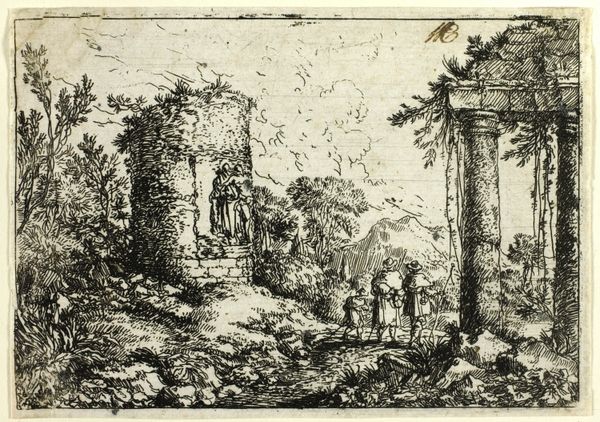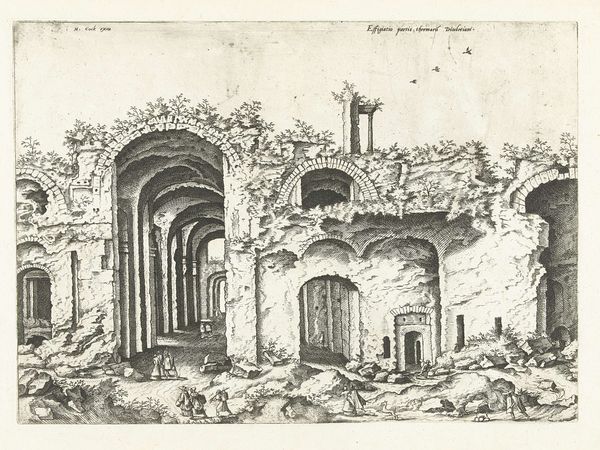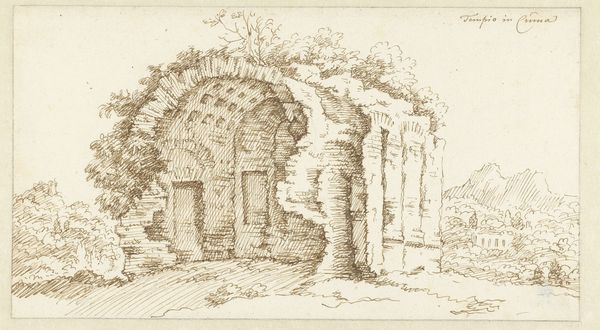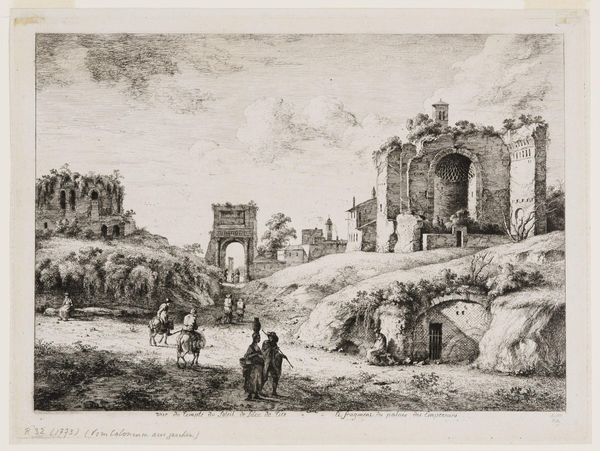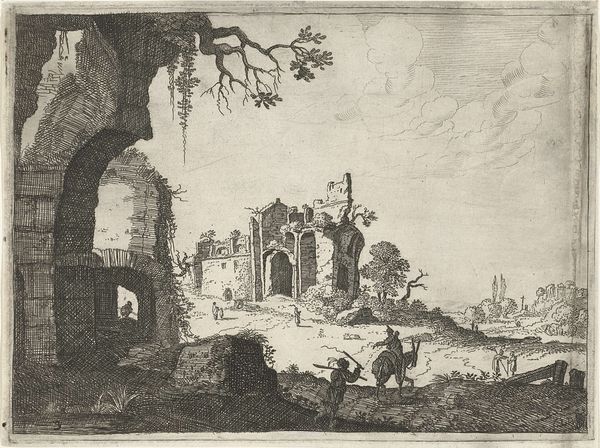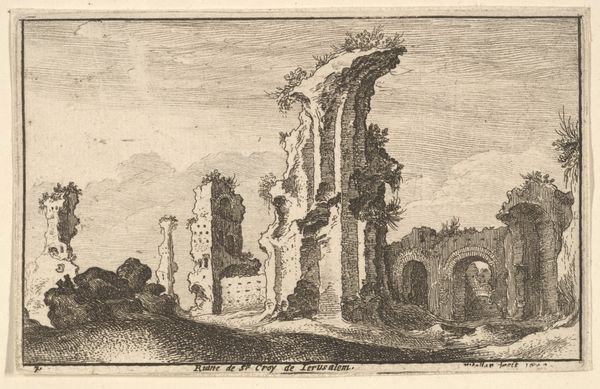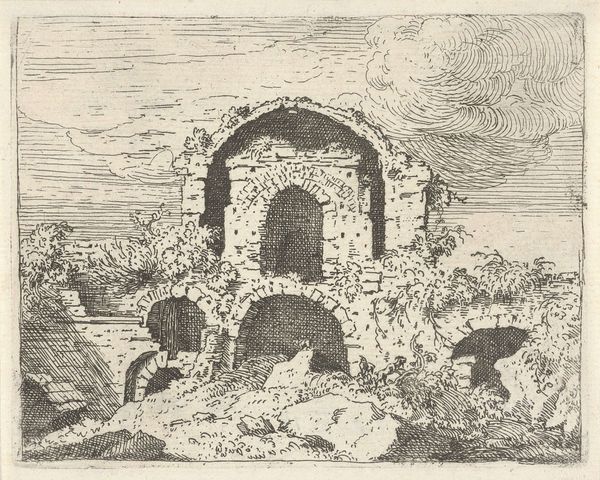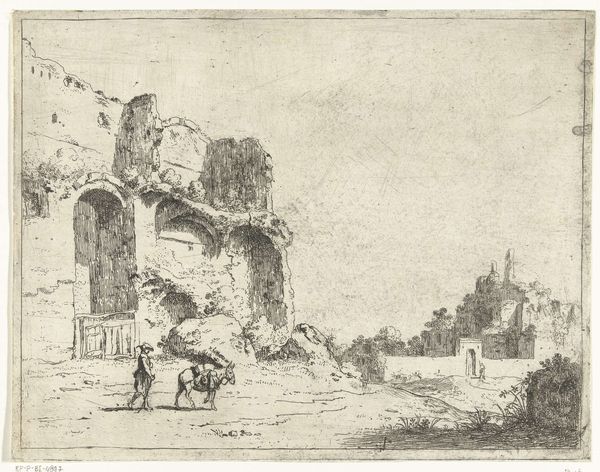
drawing, etching, paper
#
drawing
#
etching
#
landscape
#
paper
#
romanesque
Dimensions: 76 × 110 mm (image/plate); 780 × 115 mm (sheet)
Copyright: Public Domain
Curator: Here we have Jonas Umbach's "Italian Landscape with Ruins," an undated etching on paper. Editor: The initial mood it evokes is somber. The stark contrast and detailed ruins give a sense of bygone grandeur and perhaps a critical reflection of lost empires. Curator: It’s interesting that you focus on the ‘lost empire’ aspect. Considering Umbach’s time, representations of ruins often carried heavy political weight. They weren’t just picturesque landscapes. The imagery often alluded to the fragility of power structures, referencing specific empires. Editor: Absolutely. The positioning of the working-class figures in the foreground— are they commenting on who experiences this landscape or the lack of access for different segments of the society in engaging with cultural heritage sites? I would be more interested in knowing where the artist was positioned within such debates! Curator: That's a good point, particularly in the context of art as a privilege for specific groups. And there's the aesthetic of decay. How does the appeal to romanticism and the focus on decaying classical structures align with socio-political viewpoints within his artistic output at that time? Editor: Precisely. It challenges that idealization. Are we meant to see the resilience in decay, or critique a society fixated on the past, ignoring present struggles? Who owns the narrative around that space of ruins? Is it the tourist gazing upon 'history,' or the people living with its physical manifestation every day? The answers might challenge popular historical narratives, no? Curator: You are leading to the broader role of visual arts. Who consumes this imagery, how are these settings curated and what kind of agenda is reinforced during the interpretation of the pieces? Editor: That’s fascinating. I now see the work less as a simple depiction and more as an opening for deeper conversations about cultural value and power dynamics. Curator: Exactly, it's important to look beyond the art in isolation, and to examine who or what influenced the artist, the political discourse in existence at the time of artistic production and consumption, and even the gender and socioeconomic dimensions associated with each piece.
Comments
No comments
Be the first to comment and join the conversation on the ultimate creative platform.
